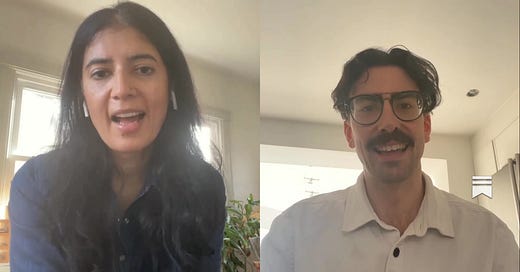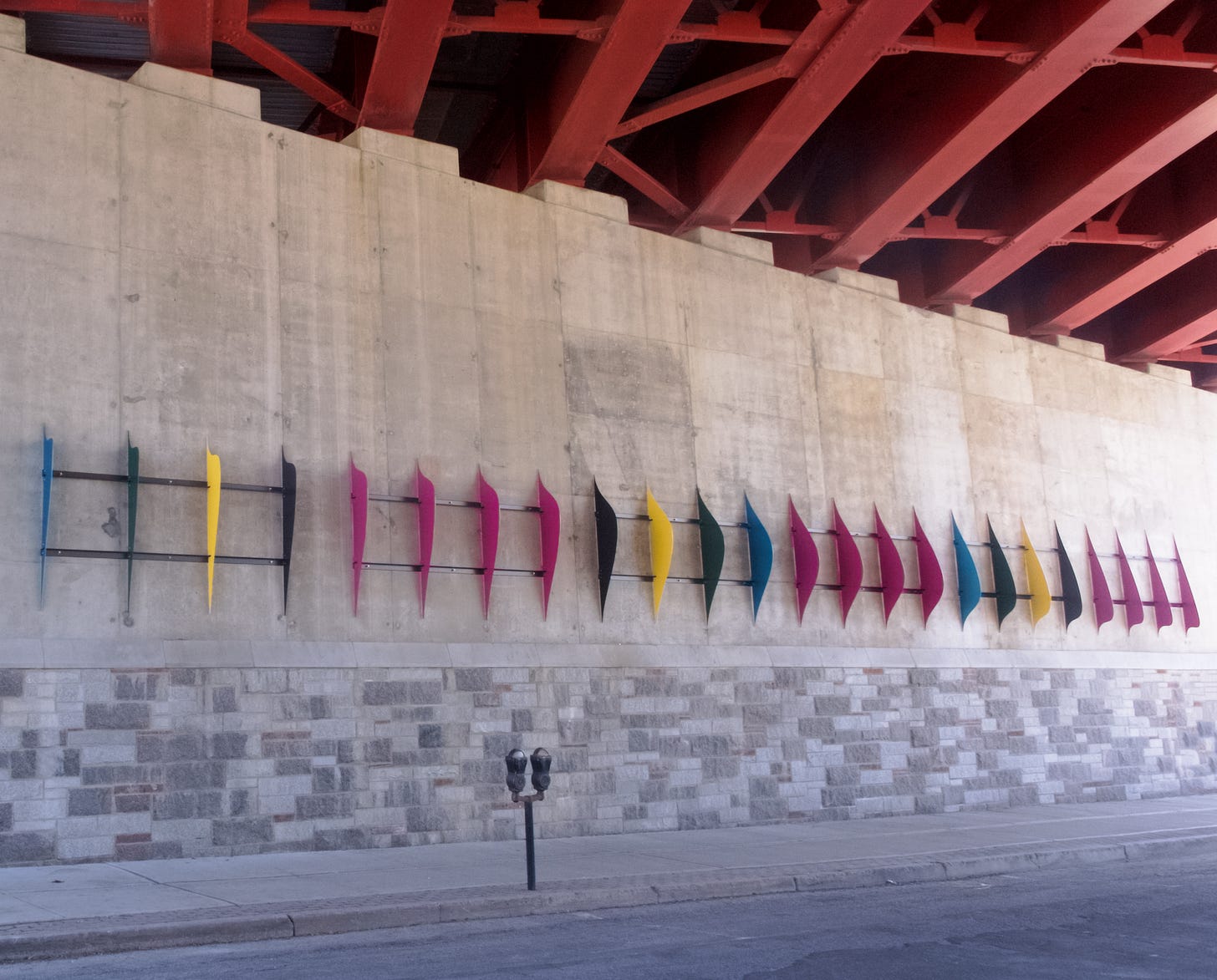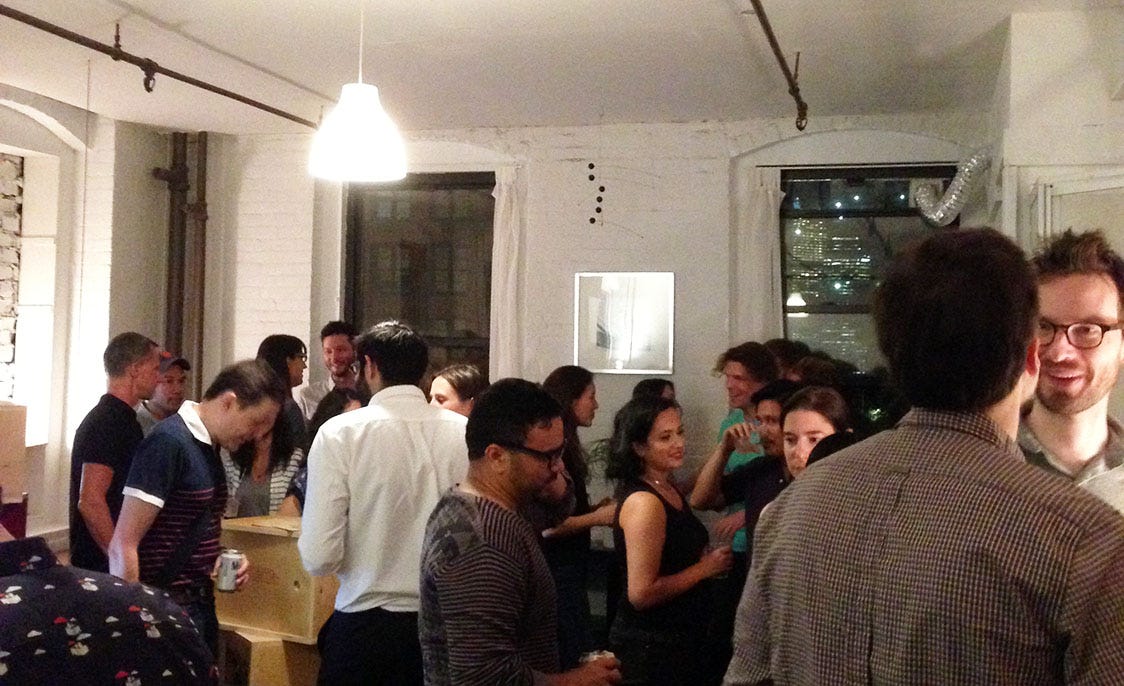It’s always a pleasure to chat with Will Noel Clarke! He has a deep background in art and knows his stuff inside and out. This session is packed with valuable insights and wisdom—there is a lot to take away from it!
A bit about Will - he was the director at Vitrine1, a commercial gallery in London and Basel. He also worked as a curator at Glyndebourne, an opera house with a commercial visual arts program. At Vitrine, he represented about 13 artists and organized around 10 exhibitions annually, focusing on experimental practices.
At Gyndebourne2, he curated large-scale exhibitions and archival projects, working with notable artists like Chris Ofili, Antony Gormley, and Howard Hodgkin. He now works as an artist mentor, consultant, and independent curator, focusing on programming and sales in a commercial environment. For more details on his career, I recommend reading the transcript and looking through my first post3 with him.
One-on-One Art Guidance
I am planning to ask Will for a personalized art guidance session. He offers mentoring and consultancy sessions for artists and tailors each session to fit their unique needs, goals, mediums, and contexts.
He covers various topics, such as CVs, portfolios, studio visits, contracts, and critiques, all aimed at helping artists reach their goals, find their footing in the art world, and work in the right direction based on their skills and artistic goals.
If interested, visit his website, williamnoelclark.com, and contact him directly for a 25% discount on your first session. You can also reply directly to this email, and I can put you in touch with Will.
I'm putting together a great lineup of artists, collectors, gallerists, curators, and art consultants who are excited to share their experiences. If you'd like to join group sessions where you can ask them questions directly and connect with other artists, please upgrade to paid. I think it'll be a really helpful way to get guidance and hear from people who’ve been there.
Now that we’ve covered that, let’s dive into some key insights we discussed on Wednesday. We touched on topics like building self-confidence, navigating funding and residencies, gaining visibility in art, and much more. If interested, this page has a button to read the full transcript or you can watch the video to hear me bungle up the names of the artists who submitted questions.
Here are some high-level insights from our chat.
Let your Art ‘Speak for Itself’
According to Will, your artwork's quality and standard should be any artist's primary marketing tool. He believes that if your work is high quality, relevant, and ambitious, it can be one of the best marketing tools, even if you're not the most outgoing or naturally inclined to promote yourself.
Will emphasized that the artwork should "speak for itself" and be the main factor in building visibility, rather than relying solely on networking or promotional efforts. He’s confident that strong artwork can help you overcome any limitations in self-promotion. The key takeaway is that Will puts the highest value on the strength of the artwork as the foundation for growing your professional network and making a name for yourself in the art world.
Put yourself in the thick of it
Utilizing personal skills can be an effective strategy for gaining visibility and networking in art:
When he was starting, Will wrote for various art magazines. This helped him meet new people and form relationships with the press, galleries, and artists.
He mentioned other examples, such as photography, documenting exhibitions, and working as a technician installing shows. These roles allowed him to get more involved in the art scene and meet new contacts.
Will emphasized that these roles, even if not directly related to your art practice, can help "put you in the thick of it" and facilitate networking and community engagement.
The key point is that Will encourages artists to leverage their existing skills and interests, even if they are not strictly artistic, to get more involved in the art world, make new connections, and increase their visibility. He sees these roles as valuable pathways to build your professional network.
Documentation of your work
Most collectors and curators will visit an artist’s website to see their work. According to Will, an artist's website is crucial for professional presentation and visibility. He provided the following advice about an artist's website:
It should be to a high standard - Will emphasized the importance of having a website with high-quality documentation of your artwork and exhibitions.
Your website should reflect your intended purpose, whether that's a more traditional portfolio or a sketchbook-style approach.
It should be coherent and easy to navigate. Ensure the website is easy to use and has clear information about mediums, dimensions, titles, artist statements, and biographies.
It should blend personality and professionalism. The website should allow your personality to come through while maintaining a professional overall presentation.
It should be regularly updated - Keeping the website current with new exhibitions and projects is important.
An artist's website is a critical marketing and networking tool that should be treated with the same care and professionalism as the artwork. It's an essential part of an artist's overall visibility and brand.
Commisioning text
Commissioning external texts or critiques can be smart for artists, whether for gallery exhibitions or personal use. For gallery shows, the gallery usually provides a formal text to accompany the exhibition. However, artists can also commission a creative, contextual piece that offers a fresh take on their work.
This external text can be used in various ways, such as on the artist's website, shared with collectors, or even provided to the press.
The real benefit of this approach is that it gives an outside, critical perspective on the work, which can be incredibly valuable for an artist’s development. By commissioning these texts alongside the standard gallery text, artists gain more content to share and get constructive feedback that can help refine their practice.
Get yourself a Studio Space.
This is easier said than done, but studio space doesn’t have to be grand. It could even be a hot-desking situation where you get to go out and interact with other people. According to Will, having a studio space is more than just a creative workspace - it can be a valuable tool for networking and professional development as an artist.
1. Studios are not just places to make work but also for networking, communication, and peer-to-peer engagement.
2. A good studio space with opportunities like open studios, project spaces, or events can facilitate valuable interactions and learning experiences with other artists.
3. Even if an affordable studio space is challenging, Will emphasized that having a dedicated workspace outside one's home can be very beneficial.
He sees studios as an important step in an artist's career trajectory, providing a professional environment beyond just working at home.
Do you want it enough?
Balancing a day job with a dedicated art practice can be extremely challenging. Will acknowledged that he struggled with this balance when he was an emerging artist, finding it very difficult to go to a full-time job and then have the energy to work on his art practice.
According to him, it ultimately comes down to how much the artist "wants it" - those who are truly driven and passionate about their art will find a way to make it work, even with the constraints of a day job.
Flexibility in work schedules, such as having a night job instead of a day job, can sometimes make it easier to dedicate time to art practice.
The key point is that while Will acknowledged the immense challenge of balancing these two demands, he believes it comes down to the individual artist's level of commitment and drive to prioritize their art practice, even with the constraints of outside employment.
Motherhood is another thing that keeps artists who are parents from producing art, but taking a break to spend time with your family and coming back to your art practice is an option. This has worked well for me and my family. My children are school going age now and I have more time to spend towards my art and design practice.
Things Don’t Happen Overnight, Sorry!
…things don't happen overnight, and things kind of come back around in a year, two years, three years. It's really surprising. The kind of projects that you meet someone a year before, kind of fleeting conversation, you talk with them, and then, in two years time, they're like, Oh, actually, I've got a project that I'm working on that you would be perfect for. Would you be interested in a, coffee and a chat or something?
We discussed the importance of sustainability for artists, both financially and in terms of energy/well-being. Here are the key points Will made:
1. Sustainability is about financial sustainability AND maintaining your energy and health as an artist. Will emphasized that you don't want to get burned out, which I can attest to. I had to stop working on my creative practice because I was balancing multiple projects, not getting paid enough, and wanted to start a family.
2. Will advised finding a balance and pace that works for the individual artist rather than feeling pressure to rush or do everything at once. He said, "Things don't happen overnight" in art.
3. He highlighted the value of taking a slower, more intentional approach, as opportunities can often return in a year or two, even if they don't materialize immediately.
4. Balancing a day job, family, and art practice is incredibly difficult, but a truly passionate and dedicated artist will find a way to make it work sustainably in the long term.
Will emphasized the importance of financial and personal sustainability in an artist's career rather than just focusing on rapid growth or success. He sees a measured, intentional approach as crucial for long-term viability.
Do Your Research
There is money somewhere for your professional practice; you have to look for it and sometimes ask for it. In the UK, an Arts Council Professional Practice Grant allows artists to develop their creative practice. There are also specific grants for material research, artistic research, getting a mentor, etc.
It is helpful to be disciplined when applying for opportunities. This means spending time figuring out what type of help you are looking for. Reach out to institutions that give out grants or organize residencies, as they are often willing to provide guidance and help.
Commisions are harder to come by than residencies because they are mostly facilitated by a gallery or a mediator. They may also just come from your existing contacts, galleries, etc. However, residencies can be helpful because good residencies have good mentors, visiting tutors, and facilities and can help develop a special area of your practice.
Funding, grants and residencies, are about practice development, about career development, professional development. And having a very clear reason about why you're applying to these things. that's a really important part. It's like, I'm applying just because I need some money. It's - no I'm applying because I want to test out this new glaze on my ceramics that I think is going to kind of enhance it in this way. And actually is really interesting because it, kind of clear and tangible like that.
While budgeting out your project for grants, ensure you include appropriate fees for yourself, technicians, and others. Do not pay for residencies. Reputable residencies mostly provide stipends and cover accommodation. Look for residencies that align with your medium and artistic interests. I put out a newsletter with no-fee residencies and fellowships earlier in the week so keep an eye out for it.
Engage, Evaluate, Seek Feedback
Maintaining self-belief in the arts can be tough, but the great thing is that artists have the chance to turn setbacks into valuable learning experiences. Will believes it's important for artists to be self-critical of their work, but only to a point—there's a balance between constructive reflection and being too hard on yourself.
“.. it is important to be critical of your work and self critical of your practice, and kind of evaluate it as well, or evaluate exhibitions personally or opportunities or projects or works to say, Well, what works, what didn't work, what would I change about that next time?”
Seeking feedback from peers, mentors, and professionals can help provide valuable outside perspectives to build confidence.
Regularly engaging with the broader art world by attending exhibitions, galleries, art fairs, and institutions can help artists gain context and see their work in relation to their peers. This can give a very well-rounded view of the art world.
Curators, artists, press, and galleries will not necessarily tell artists directly if their work is not up to par. In this case, having a studio community and opportunities for critique can provide important support and validation for an artist's practice.
Artists can build confidence and improve their practice by actively engaging with relevant work, analyzing what makes certain pieces successful, and seeking feedback from others.
I would be happy to organize some art-crit sessions. Please fill out the poll below to indicate interest.
Be a Catalyst
You can use online platforms to show your work, especially if you're not based in a major art hub. But it’s also really important to connect with local art scenes—attend events, apply for residencies, and look for exhibition opportunities. If there’s no art scene where you are, why not create one? Some areas are getting funding to support emerging creative communities, so it’s a great time to take the initiative.
Key Takeaways
Summing up here are a few key things stood out in my conversation with Will:
Focus on the quality and strength of your artwork as the primary marketing tool. The work should speak for itself.
Leverage your personal skills and interests to get involved in the art world, even if they are not directly related to art-making. This can help build your network.
Maintain a professional, high-quality online presence through your artist website, and consider commissioning external texts to provide additional context.
Balancing a day job and art practice is extremely challenging, but dedication and passion can make it possible for some artists.
Be proactive in researching and applying for grants, residencies, and commissions, but don't undervalue your time and work.
Overcome self-doubt by seeking feedback, engaging with the broader art community, and celebrating small wins along the way.
At the heart of it all, it’s about being strategic, professional, and persistent — all while finding a rhythm that keeps your creative energy alive. All creative pursuits come with a certain amount of stress, but if your art career is making you miserable, its time to take a close look at how you are spending your time, and outline a plan that is sustainable and gives you joy.
Thanks for reading, please reach out to Will at willnoelclarke@gmail.com for personalized art guidance sessions at a 25% discount.











Share this post